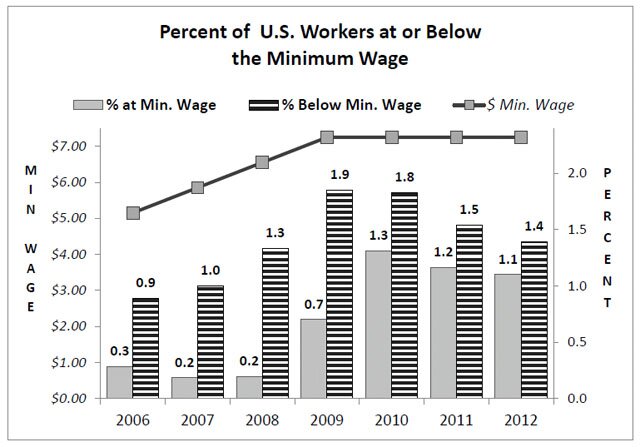Nearly 20 million young people ages 16 to 24 were working before the first increase in the minimum wage went into effect in 2007, but that number fell to 16.9 million shortly after the final increase. The unemployment rate for teens jumped from 15% to 25%. All that might be dismissed as bad luck or bad timing were it not for what happened to the number of people earning less than the minimum wage.
People are usually surprised to learn there are far fewer people earning the current $7.25 minimum wage than the number earning less than $7.25 an hour. In 2012, 1,566,000 people were paid the minimum wage in 2012, or 1.1% of all 142.5 million civilian employees, the Bureau of Labor Statistics says. In the same year, however, there were nearly 2 million people earning less than the $7.25 "minimum wage" — 1.4% of all jobs.
Since those 2 million obviously did not benefit from the last increase in the federal minimum wage, or from even-higher minimum wage rates in 23 states, why would anyone imagine they would now be paid more if the minimum were greatly increased again?
Minimum Wage Exemptions
The minimum wage law, under the Fair Labor Standards Act, does not prevent people from working at below $7.25 largely because of legal exemptions. All businesses with less than half a million dollars of annual sales are exempt (unless engaged in interstate commerce), as are seasonal amusement and recreational businesses, fisheries and small newspapers.

